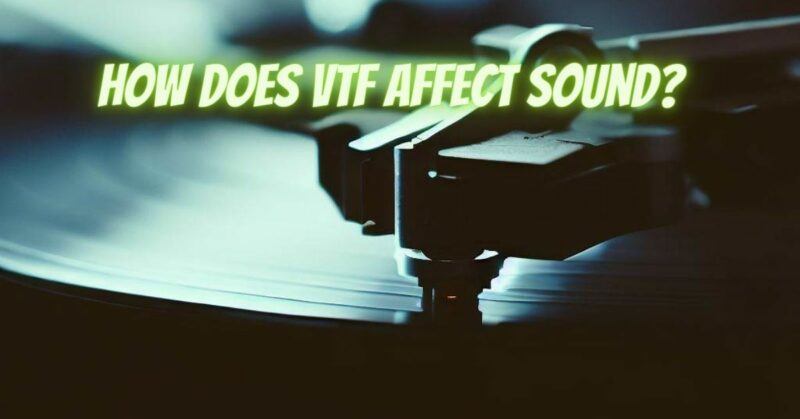Vinyl records have made a remarkable comeback in recent years, captivating audiophiles and music enthusiasts with their warm, analog sound. Achieving the best possible audio quality from your vinyl collection depends on various factors, and one critical element to consider is the Vertical Tracking Force (VTF). In this article, we will explore how VTF affects sound quality in turntables and why it’s an essential parameter for vinyl playback.
Understanding Vertical Tracking Force (VTF):
Vertical Tracking Force, often abbreviated as VTF, refers to the downward pressure exerted by the tonearm and stylus (needle) on the grooves of a vinyl record as it tracks the spiraling groove. VTF is measured in grams (g) and is a crucial parameter to get right for optimal sound reproduction.
The Impact of VTF on Sound Quality:
VTF has a significant influence on the sound quality produced by a turntable. Here’s how it affects various aspects of audio playback:
- Tracking Accuracy: The primary role of VTF is to ensure the stylus remains in constant contact with the record’s grooves. Too little tracking force can result in the stylus losing contact with the groove, leading to skipped or distorted audio. On the other hand, excessive VTF can cause excessive wear and damage to the record and stylus.
- Tonal Balance: Proper VTF is crucial for maintaining the tonal balance of the music. Incorrect tracking force can lead to shifts in tonal balance, affecting the highs, mids, and lows. The result may be an altered representation of the artist’s intended sound.
- Tracking Distortion: When VTF is too high, it can introduce distortion and sibilance into the audio. This distortion can lead to harsh, unpleasant sound quality.
- Stylus and Record Wear: Incorrect VTF can cause excessive wear on both the stylus and the record’s grooves. Excessive tracking force can lead to groove damage and a shorter lifespan for your vinyl collection.
- Surface Noise: Inaccurate VTF can result in an increase in surface noise and pops and clicks during playback. Proper VTF minimizes these unwanted artifacts.
Setting the Correct VTF:
To achieve optimal sound quality and preserve your vinyl records, it’s essential to set the correct VTF. Here’s how to do it:
- Consult Your Turntable Manual: Start by checking the user manual of your turntable. It often provides recommended VTF settings for the tonearm and cartridge combination you’re using.
- Use a Tracking Force Gauge: Invest in a tracking force gauge, a specialized tool that accurately measures the tracking force. Place it on the turntable platter and adjust the counterweight on the tonearm until the stylus floats at the recommended VTF value.
- Regular Monitoring: VTF can change over time due to stylus wear or environmental factors. It’s essential to periodically check and adjust the tracking force to ensure consistent sound quality and record preservation.
Vertical Tracking Force (VTF) is a critical parameter that significantly impacts sound quality when playing vinyl records on a turntable. Properly setting the VTF ensures accurate tracking, tonal balance, and reduces wear and distortion, leading to a more enjoyable listening experience. Regularly monitoring and adjusting VTF will help you get the best audio quality from your vinyl collection while preserving your records for years to come.

